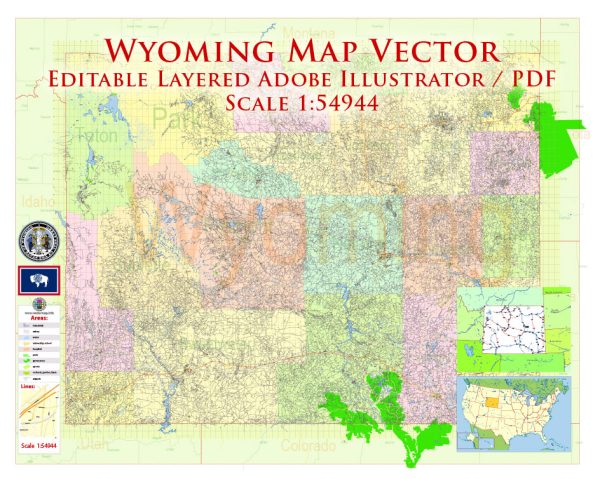Wyoming, known for its vast landscapes and sparse population, has a unique history of urban development that differs from more densely populated states. The state’s urban development is characterized by a few key factors:
- Early Settlement and Fur Trading (1800s):
- The region that is now Wyoming was initially explored by fur trappers and traders in the early 19th century.
- Fort Laramie, established in 1834, played a crucial role in the fur trade and served as a key stopping point for settlers moving west.
- Oregon Trail and Westward Expansion (1840s-1860s):
- The Oregon Trail, a major route for westward migration, passed through Wyoming.
- Towns like Fort Bridger and South Pass City emerged as important rest stops for pioneers heading to the Oregon and California territories.
- Railroad Development (late 1800s):
- The completion of the First Transcontinental Railroad in 1869 at Promontory Summit, Utah, spurred economic growth in Wyoming.
- Cheyenne, the capital, became a major railroad hub, and other towns like Laramie also thrived due to their strategic locations along the rail lines.
- Mining and Energy Boom (late 1800s-early 1900s):
- The discovery of minerals, such as coal, oil, and natural gas, contributed to Wyoming’s economic development.
- Towns like Casper and Rock Springs experienced population booms due to coal mining, while oil extraction activities influenced the growth of places like Cody.
- Yellowstone National Park (established in 1872):
- Wyoming is home to the first national park in the world, Yellowstone. While not an urban center, the park has had a significant impact on tourism and economic development in nearby communities.
- Modern Urbanization (20th Century):
- In the mid-20th century, the state experienced limited urbanization, with a focus on accommodating the needs of a growing population and industries.
- Casper, Cheyenne, and Laramie continued to be important urban centers, and Jackson Hole emerged as a tourist destination with a blend of outdoor recreation and upscale amenities.
- Economic Diversification (Late 20th Century – Present):
- In recent decades, Wyoming has sought to diversify its economy beyond traditional sectors like energy and agriculture.
- The University of Wyoming in Laramie and other educational institutions contribute to research and development, fostering innovation and technological advancements.
- Challenges of Urban Planning:
- Wyoming faces unique challenges in urban planning due to its vast, sparsely populated areas. Balancing economic growth with environmental conservation is a key consideration.
Overall, Wyoming’s history of urban development reflects the interplay of natural resources, transportation networks, and the influence of national parks on the state’s economic and demographic evolution.


 Author: Kirill Shrayber, Ph.D.
Author: Kirill Shrayber, Ph.D.